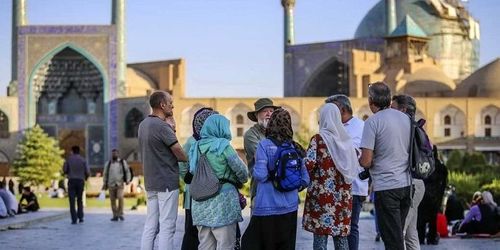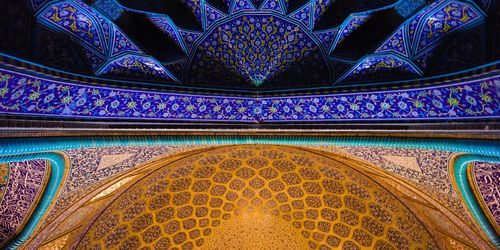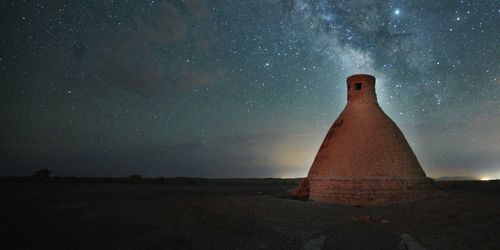
Being blessed with extraordinary masterpieces and outstanding architecture, Isfahan is one of the most fascinating cities in the world. The city of turquoise domes and enchanting arts is a delight to visit. The urban fabric of this fantastic city on the sides of the Zayandeh Rood river shows the Persian artistic spirit and the dynamic of life.
Isfahan is the third-largest city in Iran after Tehran and Mashhad. Also, it was the capital of Iran during the Safavid Dynasty, which makes it one of the most important cities in the world.
Isfahan is the place to appreciate Persian cuisine, walk in one of the most beautiful squares in the world and discover gorgeous places in old alleys with open arms to embrace you.
Isfahan
What is the Meaning of Isfahan?
Isfahan comes from the word “Sepahan” which literally means the troops in the Persian language. According to Stranzy, Isfahan was a place for gathering of the army. Therefore, it was called Sepahan, which is the plural form of Sepah, which translates to a group of soldiers or the army.
The name of Sepahan has changed through time to Isfahan. Also, Iranians call Isfahan “Nesf-e Jahan” or half of the world because of the magnificent architecture, incredible culture, and lovely artifacts.
A Brief History about Isfahan
Once upon a time, there was a city in the middle of Iran surrounded by high mountains and vast deserts called Isfahan. During the Sasanian Empire, Isfahan was used for gathering the army because of its great location and having access to the freshwater (Zayandeh river). Everything was going well until the early Islamic-period, when people who were living in Isfahan, had to displace from there because of the war and hunger. However, in the Seljuq Dynasty, the kings saw potential in the area and they could attract people back to Isfahan and develop the economy. Later on, during the Safavid Dynasty, Isfahan had major developments in the economy, art, and architecture. Today, Isfahan shines like a blue diamond in the heart of Iran and attracts visitors from all around the world to discover the mystery of this city.
Isfahan Architecture
Pre-Islamic Period
There is not much information about this city during the pre-Islamic period rather than some historical buildings and the remains of a fire temple on the Atashgah mountain. The fire temple was called Dej-e Mehrbin, but the locals call it Marbin castle. The castle was built of clay and had an octagonal room that had eight windows on each side that maggies used to light the sacred fire there.
The history of the oldest bridge in Isfahan goes back to the Sassanid Empire. Shahrestan bridge located in east Isfahan was built during wars to link both sides of the river to each other. The multiple dome shapes of the bridge let water flow under it and keep the bridge firm.
If you are looking for a more quiet place to sit alongside the river and relax while watching the water flow under the gates, you can pay Shahrestan Bridge a visit with a short taxi ride from the center of Isfahan.
Seljuq Dynasty
The architectural design during the Seljuq Dynasty is simple yet delicate. The majestic outline of the buildings captivates your heart and lets you get the sense of this outstanding beauty little by little.
The south dome of the Jameh Mosque of Isfahan can show you the magic of Seljuq’s architecture. The combination of Gothic art, along with Islamic design, has created a masterpiece to give you fear in the face of glory.
Safavid Dynasty
The landmark of art and architecture in Isfahan is during the Safavid Dynasty when Shah Abbas the First, changed the capital of Iran from Qazvin to Isfahan and paid a lot of attention to art, culture, and science.
Two significant elements used in Safavid architecture are playing with light and color. Using colorful tiles designed with delicate Islamic patterns conveys the spiritual feeling to enchant you.
The pointed arches of buildings along with Muqarnas, which is a 3D geometrical design on the ceilings and walls, emerged the beauty of Persian architecture in this era.
Isfahan Arts
Throughout history, Isfahan was well-known for its dazzling art. Today, you can still find fascinating handicrafts and superb artistic designs there.
Khatam Kari
The art of Khatam is a decoration of the surface of wooden objects such as boxes to create many symmetrical tiny delicate polygons. By using multiple hexagon cylinders that are set next to each other and pressing them on the preferred object, Khatam is being created.
Creating one piece of Khatam takes a lot of time and effort from several artists or Khatam Kars to make this masterpiece. That is why the result is so spectacular.
Mina Kari
Mina Kari works are like having a small-sized piece of Isfahan in your hand. The delicate Islamic patterns on the blue background of a vase or a plate grabs your attention.
In order to make a Mina Kari, first, the experts need to heat the vase at about 700𝇋 temperature and then paint on them. Finally, when they finished painting it, the vase needs to be heated once more with about 500𝇋 for colors to be fixed. You can find Mina Kari in Isfahan’s handicrafts and souvenir shops.
Miniature
The traditional Persian painting, Miniature, is famous for its delicacy and beauty. By painting human beings, animals, and plants, the art of Miniature gives life to mythological stories and old Persian poetry.
The movements of the brush and the colors in Miniature are graceful and eye-catching. In the past, painters used to use natural colors in their works, but today they use water-based chemical colors to create their art.
Ghalam Kari (Qalam Kari)
In the Persian language, Ghalam means pen; however, Ghalam Kari is the art of painting on clothes. Ghalam Zan, who is the expert of this art, uses some stamps made of wood to dip patterns on cotton fabrics. These stamps can be in the shape of the paisley design, flower, or animals, and then, they use a brush to finish the painting and let it dry.
By washing it once more, the color will be fixed, and the fabric is ready to be used.
What Are Isfahan’s Top Attractions?
Isfahan is made for walking. You can explore the city inch by inch without getting tired and find yourself walking on the dry leaves of Chahar Bagh street, looking at the Zayandeh Rood, standing on Khaju Bridge or even wandering from one alley to another behind Naqsh-e Jahan Square.
Naqsh-e Jahan Square
Naqsh-e Jahan Square, which is also known as Imam Square, is one of UNESCO's World Heritage Sites and was built during the Safavid dynasty.
Being the most important square of Isfahan, Naqsh-e Jahan has significant elements of that period of time inside, including education, religion, kingdom, and economy.
Finding your way to Naqsh-e Jahan through narrow alleys, you see a vast area full of plants and a big pool with fountains in the middle. While enjoying the cool breeze on your face, you can listen to the sound of carriages being carried by horses. At this time, your mind is free of all concerns, and you can freely enjoy this place. By visiting Ali Qapoo Palace and its outstanding Khatam and plaster works of the ceiling, going to Shah and Jameh Mosques of Isfahan, and wandering in the old bazaar to find Persian items, Naqsh-e Jahan square will be one of your favorite places in Isfahan. Listening to the sound of Ghalam Zani while looking at glorious Persian handicrafts in Isfahan Bazaar gives you enough motivation to buy a piece of Iranian art and have it in your house.
Isfahan Mosques
Two sumptuous mosques located in Naqsh-e Jahan Square are glitter-like pearls.
Jameh Mosque or Masjed-e Jameh of Isfahan represents the flawless architectural design of Iran by having four courtyards, four Iwans, and two amazing domes on each side. The dominant blue color with creamy patterns is a great combination to display the feeling of glory.
On the other side, the Shah mosque is the utter elegance of architecture in the Safavid dynasty. The geometrical designs under the arch of the mosque have been painted delicately to convey the spirituality and holiness of the place.
Sheykh Lotfollah Mosque of Isfahan is where you get to see the magical combination of light and tile works that have created a masterpiece. When the sun rays shine on the dome, you get to see how lights form a peacock’s tail on the ceiling. The gold and blue colors used in the ceiling are representatives of Islamic art, which is shining vividly to catch your eye.
Vank Cathedral
Inside Jolfa neighborhood, Vank Cathedral stands to show you the beauty of "unity in diversity". After the forced migration of Armenian people to Iran because of the Armenian genocide, they built this outstanding church. Today this place is not only used for prayers but also as a museum and historical site.
Going inside the church, the paintings on the walls that are shining under the light of the vintage chandeliers tell you the story of the holy book and give you the sense of being amazed and afraid at the same time. The mesmerizing memory of being inside the Vank Cathedral will be with you for the rest of your life.
Chehel Sotoun Palace
Chehel Sotoun Palace or Kakh-e Chehel Sotoun is where you get to see the paradise on earth. Among the high trees and colorful flowers of the garden that surrounds a pool full of water, you can find one of the Safavid Architectural design's masterpieces. Inside the complex, you will be standing still and looking around while admiring the blue and golden design of the walls, which is the resemblance of heavenly rose gardens.
The patterns were designed in detail and delicacy which does not allow you to leave this place easily. You want to spend hours looking at the glorious geometrical design of the ceiling.
Isfahan Bridges
The collection of bridges on the Zayandeh Rood, which is running through the heart of Isfahan, is another symbol of this amazing city. Si-O Se Pol, which translates to thirty-three bridges, was built during the Safavid dynasty and is one of the most famous structures of that time period. The arch-shaped gates of the bridge have multiple purposes. They control the water and allow it to flow under the bridge, which provides a picturesque place to see and capture.
Khajoo Bridge or Pol-e Khajoo is another famous landmark of Isfahan. The symmetrical design of the bridge lets you see the arch-shaped gates on the river linked together via a historical royal residential just in the middle of the bridge. Although entering the building is not allowed, you can see the fine plaster design of the walls from outside.
Joui Bridge, which is known as Pol-e Choobi as well, was the royal bridge used only by the king and his family to have access to the royal garden on each side of the river. The bridge was originally made of wood; that is why people call it Choobi Bridge.
Experiencing the nightlife in different bridges of Isfahan gives you a perfect view of light and colors.
Marnan Bridge is another famous bridge in Isfahan which dates back to the Sassanid Era or before. Although the arch-shaped gates can be seen in Marnan Bridge as well, you can see the difference between the architectural design of this place and other bridges that were built in the Safavid dynasty and realize the value of art and people's perspective toward it during that period of time.
Isfahan Museum of Music
When we talk about Isfahan, music is one of the main factors of this lovely city. The traditional ambiance of Isfahan combines with Persian music and plays an important role in Iran’s music industry.
In 2015, the Isfahan Music Museum had been established to treasure the history of music in Isfahan and Iran. By having more than 300 musical instruments, visiting this museum gives you the opportunity to see the rarest and most fantastic musical instruments from all around the world. Also, you have the chance to listen to their sound for the first time using the unique audio system.
The exciting part of visiting the Museum of Music is that you can see and listen to a traditional live concert at the end of the exhibition and have a grasp of Persian music.
This museum is located in Mehrdad street, in the Jolfa neighborhood.
Isfahan City Center
One of the biggest shopping malls in Iran, Isfahan City Center, is a great place for shopping lovers and those who want to buy whatever they want without wandering around in different places.
Walking among the luxurious shopping stores and looking at the variety of colorful items on three different floors of the building can be a good experience to get to know Iran's shopping atmosphere.
Besides having a big hypermarket, clothing stores, and furniture, you can use the city center’s coffee shops and restaurants as well as four cinemas.
Isfahan City Center is located outside of Isfahan, near Sepahan Shahr, so accessing it via public transportation is not easy yet. However, you can always use Snapp or Tap30 to go there.
-
⭐ Best For:
Historic Sites, Sacred & Religious Sites
-
🕌 Top Sights:
Naqsh-e Jahan Square, Chehel Sotoun, Ālī Qāpū, Si-o-se-pol
-
😋 What to Eat?
Beryan, Jeweled Rice, Khoresht-e Mast
-
🛏️ Where to Stay?
Ghasr Monshi Boutique Hotel, Keryas Traditional Hotel, Mahbibi Hostel


